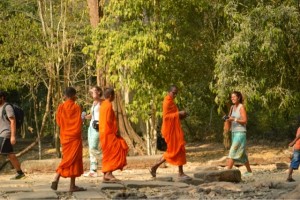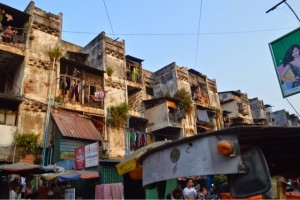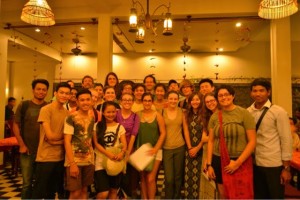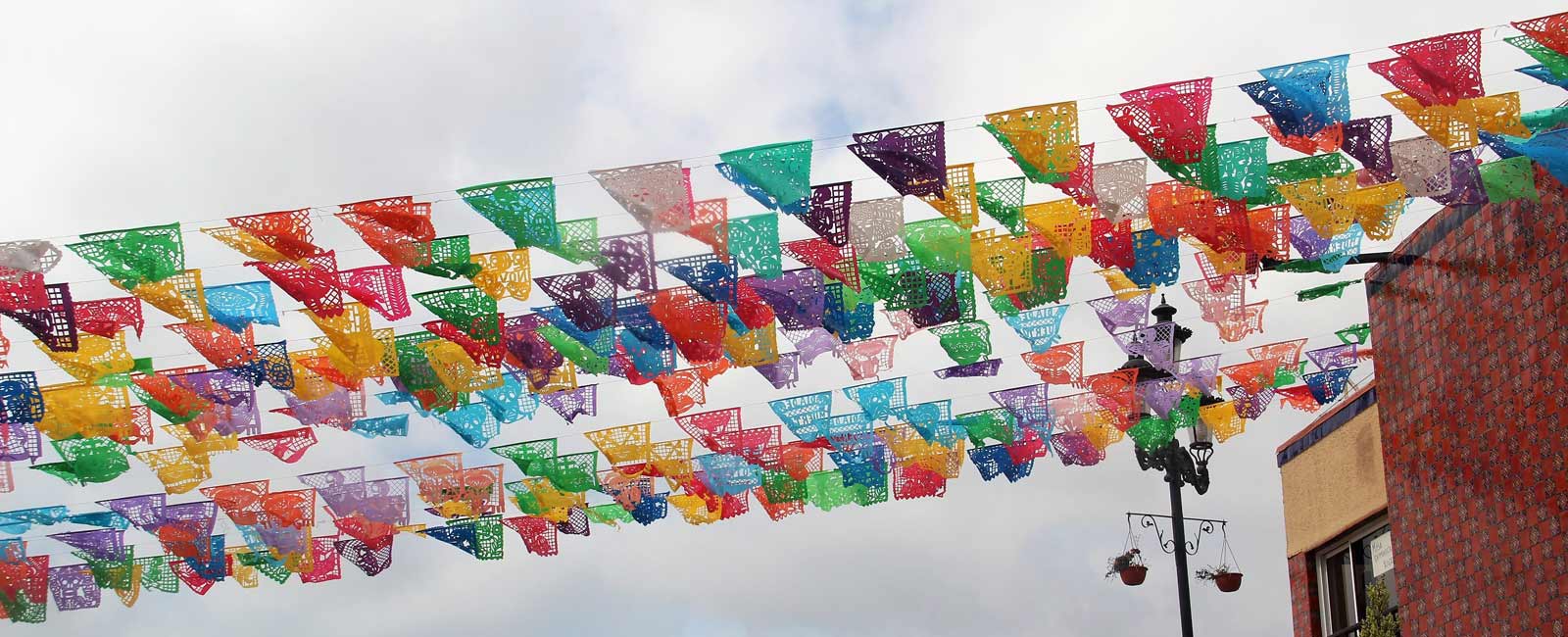
Francis Parker Exploring South East Asia
Sunday, Feb. 15: One Foot in the Past, One in the Future
“If you put one foot in the past and one in the future, you pee on today,” Yut, our tour guide in Siem Reap, reminded us with his spread-out stance. Although seemingly far from profound and even silly, we’ve seen this Buddhist sentiment reiterated throughout our several days in Cambodia. Living in the present is vital for the religion, as it keeps us humble, aware, and centered. But something Yut also stressed was the importance of looking outside of Cambodia’s past: Angkor Wat, the genocide, and other previous moments in their history. Unfortunately, in many ways the country has been defined mainly by its bygones. Luckily, we were able to see developing juxtapositions and the promise of Cambodia’s future.

The shadow puppet show we enjoyed (prior to a downpour of rain) centered around ancient stories from the Ramayana. Angkor Wat displayed a mixture of new and centuries-upon-centuries of old, as some of its walls were damaged by bullets from the reign of the Khmer Rouge. Also, many of the sacred Buddhas inside all of the temples we visited, from Angkor Wat to Ta Prohm, were decapitated and looted more recently to be sold on the black market. Contrastingly, the circus show, named “Chills,” gave promise and a future in the visual arts to young adults and teenagers from a village around three hours away. Building wheelchairs for the victims of landmines shows the past’s toll on today, as many of the mines were planted 40+ years ago. Therefore, the Landmine Mueseum has put forward efforts by building schools, removing thousands of mines, and providing a scholarships and other opportunities for students who aid them.


We arrived in Phnom Penh after a forty-minute flight, and then drove to our lunch. Immediately, we were aware of the difference between the capital and Siem Reap. Previously, we had eaten at semi-upscale restaurants whose clienteles were mainly tourists. This restaurant, with its much more unfamiliar foods, was mainly filled with residents of Phnom Penh, mostly Chinese, Koreans, and other foreigners living permanently in the city and working for nearby NGOs. We soon arrived at the You Khin House, a guesthouse whose profits go towards the Seametrey Children’s Village located in the building next door. (This, too, seemed an immediate departure from our stay in Siem Reap, where we slept under mosquito netting on wooden beds.)
Leaving the comforts of our new hotel, we entered into a Cambodia quite different from the sanitized, westernized streets of Siem Reap (dominated by elephant-patterned harem pants and resorts with Angkor in the name) and entered the slums around the governmental housing known as the White House. Designed by the former king of Cambodia, Norodom Sihanouk, the buildings today are crumbling, houseplants spilling out from small balconies. Almost immediately, the group (conspicuous with our clothing and expensive cameras) felt somewhat out of place. In contrast with the food stalls, motorcycle repair shops, and children running around, our middle-class American lifestyle stood out like a sore thumb. Many in the group later remarked that it almost felt like slum tourism, or that we should not have visited in the first place. Still, being able to see the living conditions and humble beginnings of the Cambodian Living Arts’ (CLA) students provided important context prior to seeing one of the graduated student’s (Neang Kavich) documentaries, Where I Go. The documentary followed a different CLA student, Pattica, throughout his dance studies, familial conflicts, and problems with discrimination (being half Cambodian and half Cameroonian, as well as not knowing his father).

Following the showing of the film, we departed to dinner across the street from the CLA office with the filmmaker, his brother and friend, and the coordinator of the CLA program, Melissa. Throughout dinner, we had the opportunity to ask questions regarding his production process/his inspiration for the film and the history of CLA and Melissa’s work with the program while eating coconut and mushroom soup, tempura vegetables, and delicious egg and fish “quiche/omlette.”

We are looking forward to more work with CLA throughout this next week and exploring a new city.
— Olivia Fidler, Isaac Gray and Grace Sellick
